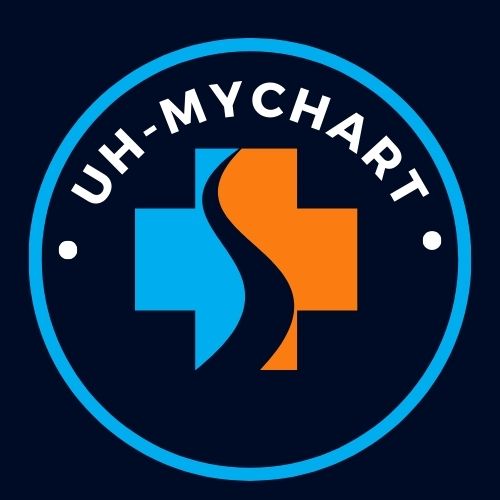The benefits provided by Social Security, Supplemental Security Income (SSI), and Social Security Disability Insurance (SSDI) are very essential for millions of people in the United States. These benefits provide a consistent income for retirees, disabled persons, and families with low incomes. Since the beginning of time, these benefits have been modified every year by the Cost of Living Adjustment (COLA), which is designed to mitigate the impact of inflation.
Recent conversations, on the other hand, have given rise to speculations and debates about a possible rise of $200 that may take the place of the conventional cost-of-living adjustment in the year 2024. Both excitement and bewilderment have been produced as a result of this big shift.
Many people are curious about whether or not this rise will be implemented, as well as how it would affect the financial security of those who would get benefits. In this post, we will investigate what this possible change includes, give fact checks, examine the ramifications of this change, and look at future upgrades.
$200 Raise Replacing the COLA for Supplemental Security Income
Before delving into the proposed increase of $200, it is essential to have a solid understanding of the primary programs that will be impacted by the change. Employees who have retired and their families are eligible to receive monthly payments from Social Security, which is the biggest government program in the United States.
Individuals who are handicapped and unable to work are eligible for Social Security Disability Insurance (SSDI), while persons who are blind, crippled, or old and have a restricted income are eligible for Supplemental Security Income (SSI).
| Program | $200 Raise Replacing the COLA for Social Security, SSDI, SSI Benefits |
| Country | United States |
| Amount | $2,00 |
| Post Category | Finance |
Historically, the cost-of-living adjustment (COLA) has been the method that has been used to alter these benefits to keep up with inflation. Annually, the cost-of-living adjustment (COLA) is computed by taking into account the fluctuations in the Consumer Price Index for Urban Wage Earners and Clerical Workers (CPI-W). If prices go up, the cost-of-living adjustment (COLA) will increase payments proportionally. This will ensure that beneficiaries can keep their buying power even in an environment where inflation is present.

Critics, on the other hand, contend that the cost-of-living adjustment (COLA) formula does not always accurately represent the real inflation that people with disabilities and elderly citizens face, notably in terms of the prices of housing and healthcare. As a possible alternative to this system, the $200 rise is being proposed as a viable alternative, offering better certainty and a more significant increase.
Understanding the $200 Raise: How it Compares to COLA
A flat $200 Raise is being considered for recipients of Social Security, Social Security Disability Insurance, and Supplemental Security Income (SSI), which would replace the annual cost-of-living increases. Regardless of the rate of inflation, this would result in a consistent increase for all of the recipients.
The cost-of-living adjustment (COLA) and the proposed rise are distinct in that the COLA is subject to change based on the rate of inflation, but the proposed rise of $200 would be a set sum that would be added to monthly payments without being subject to yearly recalibration. For instance, if a receiver of Social Security benefits presently gets $1,500 per month, they would receive $1,700 per month if the proposed increase were to take effect.
Especially in light of the recent jumps in inflation, this strategy is being called for by several parliamentarians and interest organizations as a means of providing more meaningful assistance to persons who are handicapped or elderly.
The $200 Raise constitutes a considerable percentage increase, offering greater immediate help to those who are struggling to keep up with escalating expenditures. Since COLA increases have typically been moderate (about 2-3% on average), this rise represents a significant percentage increase.
The plan, on the other hand, is not without its detractors. Some people believe that a fixed increase of $200 does not take into account future inflation and that this might result in recipients being in a worse financial position in the long term if inflation continues to climb at a rapid rate.
Because the existing system assures that benefits increase in tandem with inflation, doing away with the cost-of-living adjustment (COLA) might result in a decline in buying power over time, even though it would initially be beneficial.
Fact Checking: Is the $200 Raise Actually Replacing COLA?
What is the reality behind the assertions that have been made about the $200 Raise that would replace the cost-of-living adjustment (COLA)? There have been countless stories that have been spreading on social media and other news channels.
Therefore, as of this moment, neither the Social Security Administration (SSA) nor Congress has made any formal notification stating that the $200 increase would take the place of the cost-of-living adjustment for the year 2024. Some political personalities, on the other hand, have indicated that they are interested in discussing the possibility of modifying the adjustment process for Social Security and other government payments.
The “Social Security Expansion Act,” which was submitted by Senator Bernie Sanders, had provisions for a $200 Raise in Social Security payments. However, this plan did not specifically call for the repeal of the cost-of-living adjustment (COLA). Instead, it sought to improve the current cost-of-living adjustment system while also providing more financial assistance.
It is critical to differentiate between policy that has been verified and conjecture. At this time, the cost-of-living adjustment (COLA) continues to be implemented, and recipients may anticipate a COLA-based rise in 2024 unless new legislation is enacted.
To add insult to injury, the Social Security Administration has made it quite obvious that any meaningful reforms to the benefits system would need approval from Congress. This indicates that even if there may be continued debates regarding benefit reform, the $200 Raise is not even close to being a reliable possibility at this moment in time. Beneficiaries should exercise caution about any claims that are not officially sanctioned and wait for official updates from the Social Security Administration or government authorities.
Future Updates: What to Expect
Although it is difficult to predict what the future holds for Social Security reform, one certain thing is that there will most certainly be ongoing conversations about the most effective ways to assist disadvantaged Americans, those with disabilities, and older citizens.
Although the concept of a rise of $200 has gained popularity, it is possible that it will not be able to completely replace COLA adjustments shortly. In its place, it might be introduced as an extra benefit on top of the cost-of-living adjustment (COLA), particularly if inflation continues to be an issue.
- 30% Collapse in Housing Prices
- Mortgage Interest Rates
- SNAP Benefits Schedule October 2024
- SSDI Payment October 2024
It is also important to note that any major adjustments to the payments provided by Social Security, Social Security Disability Insurance, or Supplemental Security Income would most certainly need support from both parties. Given the current political climate in Congress, it may be difficult to adopt such legislation; thus, those who stand to benefit from it should be informed about any prospective developments. Beneficiaries will be better equipped to prepare for such changes if they stay current on Official Social Security Administration releases and news from reputable sources.
Conclusion
The possibility of a $200 Raise instead of cost-of-living increases is a notion that many people find intriguing; nonetheless, it is still a proposal that is based on speculation. It is important for beneficiaries to exercise caution when dealing with unauthorised claims and to depend on information that has been confirmed by the Social Security Administration and other reliable government sources. There is no change in the objective, which is to give enough financial assistance to those individuals who depend on these essential services, regardless of whether the aim is accomplished via a fixed rise or continuous COLA changes.
| Homepage | https://uhmychart.org/ |
In the meanwhile, you may make the most of your Social Security, Social Security Disability Insurance, or Supplemental Security Income benefits by adopting measures to optimize your benefits including creating a budget, making use of available support programs, and being educated.
PV Martinez holds an MBA in Finance from the University of Michigan. When not analyzing numbers, PV enjoys playing football and spending time singing his favorite tunes.

